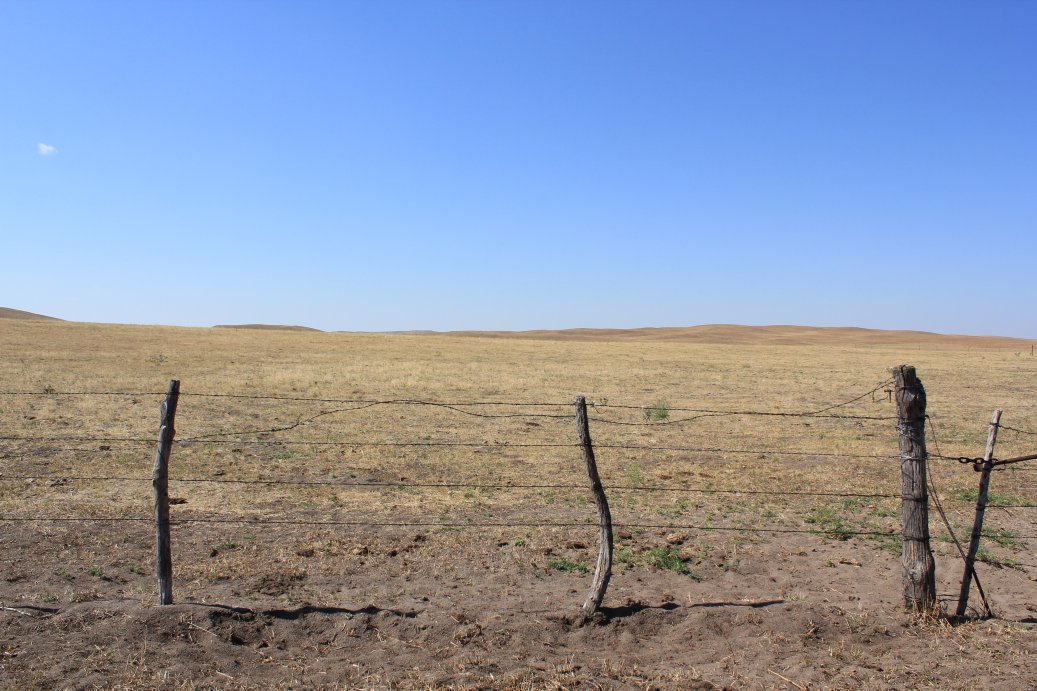
By Tyler Williams, Nebraska Extension Educator; Don Adams, West Central Research and Extension District Director; and Aaron Stalker, Nebraska Extension Beef Range Systems Specialist
An early warm-up and dry conditions this year remind us of the lessons learned in 2012. While today’s forecasts aren’t pointing to extreme warm and dry weather like we experienced in 2012, our current conditions definitely warrant developing a drought management plan. Recent rainfall benefited some, but most locations from southwest through northeast Nebraska have been dry since October and are three to four inches below normal over the last six months. Winter and early spring precipitation is critical for pasture growth, so this lack of moisture is a concern. The outlook for the next few months is quite uncertain at this point. The forecast from the Climate Prediction Center places Nebraska with equal chances of above or below normal temperatures and precipitation. Because April, May, and June typically produce a large portion of the annual rainfall amounts precipitation during these months have a big impact on pasture conditions.
Even though we don’t know for sure how pasture conditions will turn out it’s never too early to make drought management plans. During drought both forage quantity and forage quality can be negatively impacted. The earlier a drought management plan is implemented the more time there is to adjust to conditions. If nothing is done early then radical management actions, such as herd liquidation, may become necessary. Having plans in place early with predetermined contingencies triggered by conditions make it much more likely to weather the drought successfully. Below are some suggestions to deal with both decreased forage quantity and quality.
Steps to extend forage supply:
1) Keep herd inventories current. Expedite marketing of cull or poor performing animals. Typically as drought intensifies or persists local cull prices decline. So culling early not only extends scarce feed resources but could result in increased salvage value. Remember 10 cows removed from the ranch for 5 months is equal to 50 cows removed for 1 month.
2) Preg check early, especially via ultrasonography. This results in identification of cull animals early on which saves forage if they are removed immediately.
3) Wean calves earlier than normal. Weaning the calf and removing it from the pasture reduces forage demand in two ways: 1) it eliminates the consumption of forage by the calf and 2) it reduces the amount of forage consumed by the cow. A lactating cow consumes more forage than a non-lactating cow. As a general rule about 10 pounds of forage is saved each day after a calf is weaned and removed from the ranch. This is about 0.4 days of grazing for a dry cow.
4) Secure additional forage. Now is the time to make arrangements for cornstalks. Because 80% of the corn acres in Nebraska receive some irrigation even during a drought cornstalks will be produced. Getting at least part of the cows off the ranch during the fall and winter extends the grazed forage or hay supply which is frequently diminished during drought and/or reduces the need to purchase hay which is more expensive during drought.
5) Feed cows in a dry lot. Corn and distillers grains prices are less expensive than recent years and limit fed rations can be a viable option. When considering feeding cows in a dry lot working with an extension professional or nutritionist is recommended.
6) Move or market yearlings or surplus heifers.
Steps to manage low quality forage:
1) Wean the calf. Because the cow is no longer lactating her requirements are reduced and she is better matched to a low quality forage.
2) Feed a protein supplement if forage supply is adequate.
Cautions:
1) Limit feeding pairs can be problematic. It is usually better to wean the calf.
2) Nitrates are frequently a problem in drought stressed forages, especially annual forages. Test all forages and be cautious about grazing drought stressed corn.
3) Cows and calves are more likely to consume poisonous plants as standing forage declines.
Even though the forecast is uncertain, making plans now will make dealing with drought much less painful if it eventuates. Early planning and response gives more flexibility and makes more options available. Each operation should have a drought management plan with specific actions to take by specific dates based on conditions.